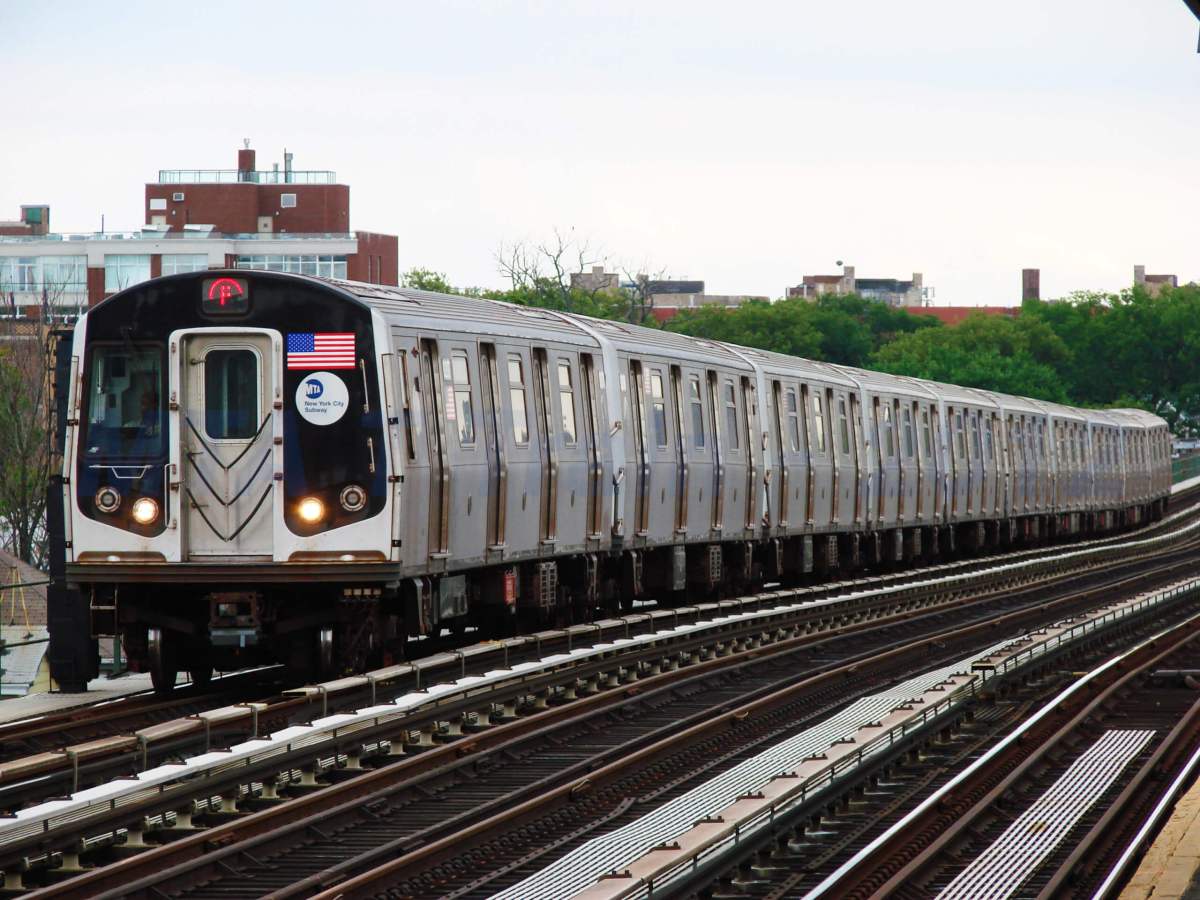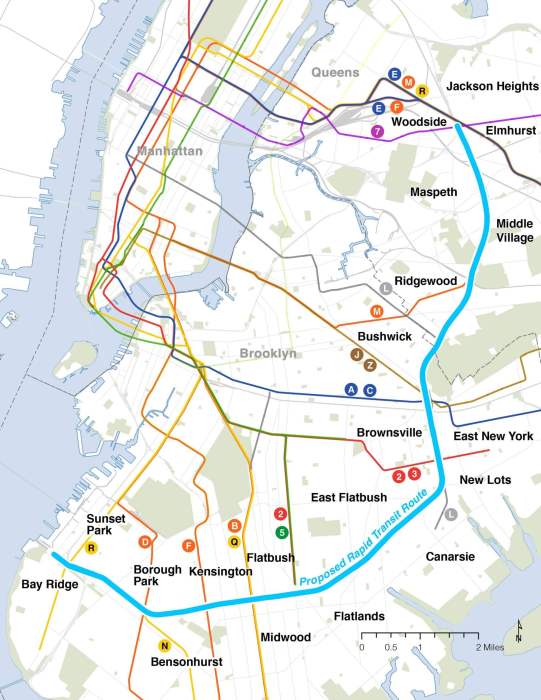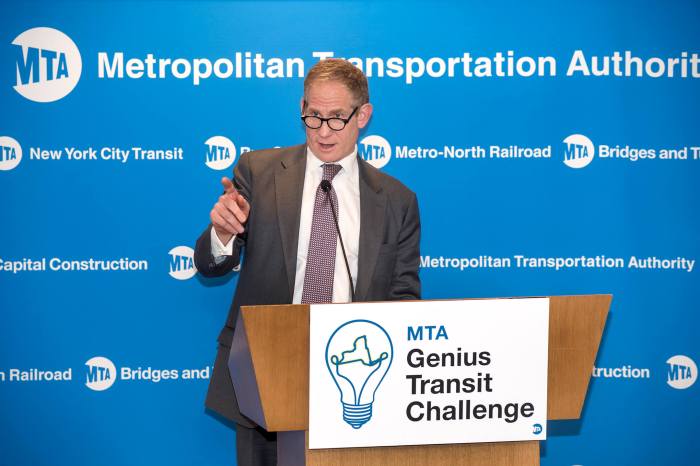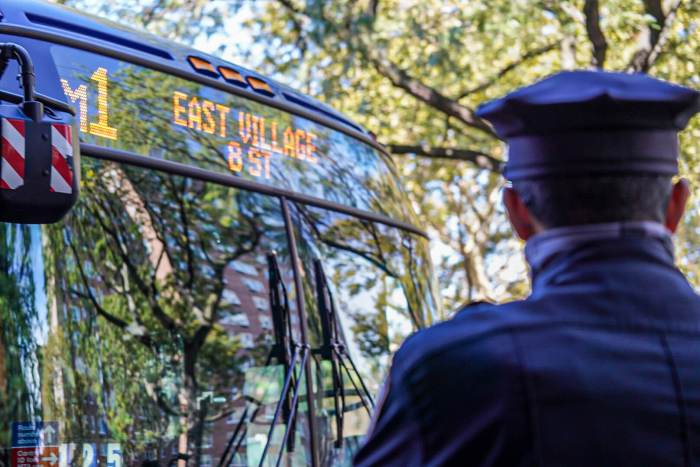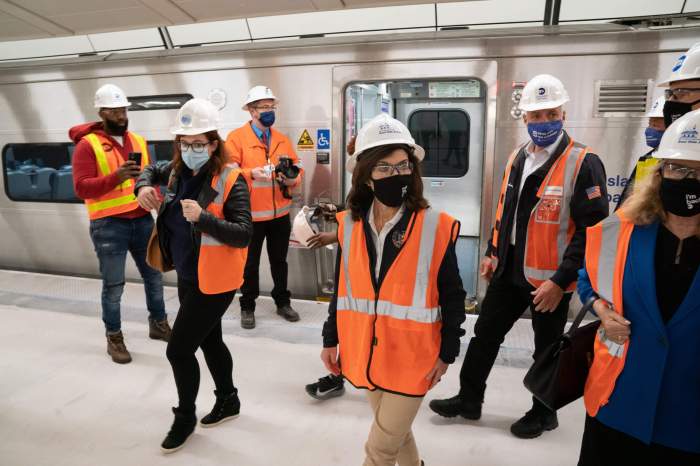The MTA proposed a $19.2 billion budget Wednesday that requires massive cost-cutting at the sprawling agency and fare increases that could potentially see the price of a subway or bus swipe rise above $3 for the first time.
Even with such drastic measures, the agency would still have a $600 million budget hole it needs to plug, which will require pleading with city, state, and federal lawmakers for new, dedicated streams of revenue as federal COVID-19 relief money dries up and projected ridership doesn’t return to pre-pandemic levels.
“How do we react to a moment when there is an existential crisis facing the MTA? How do we react to it creatively,” said MTA Chair and CEO Janno Lieber at the authority’s monthly board meeting. “The bottom line is, this is a plan that is designed to protect riders. At a moment when we have a huge financial impact from COVID, our priority is maintaining service, and making cuts that do not require job cuts and don’t impact on our ability to put on service, and which are moderate in the fare increases.”
MTA bigs have warned for months that with stagnant ridership hovering around 60% on subways and buses, and $16 billion of federal pandemic relief funds expected to run out, the agency would be unable to plug a multi-billion dollar deficit and will hurdle over the so-called “fiscal cliff” without new dedicated funding.
Even the most optimistic ridership projections only reach 88% of pre-pandemic levels by 2026, and the MTA has left painful service cuts and headcount reductions off the table.
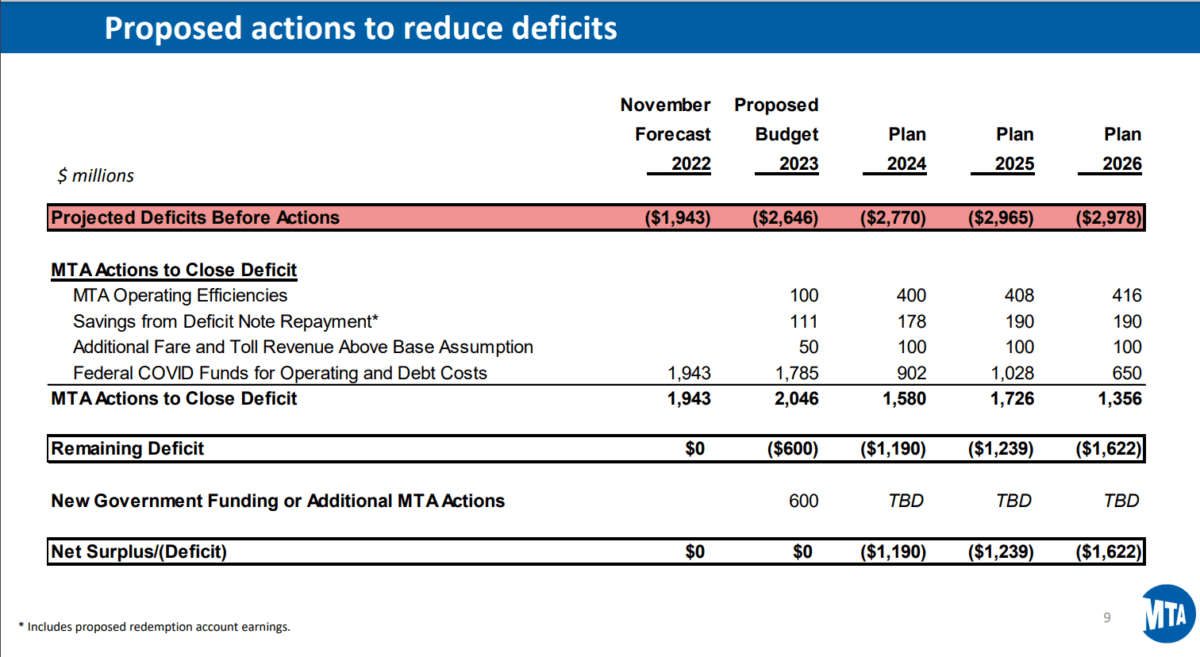
November’s financial plan represents an actualization of the agency’s fears: subways, buses, and commuter rails are set to pursue various cost-cutting measures, and a 5.5% fare hike — above an initially forecast 4% — will most likely go into effect starting next year and occur again in 2025, recurring biennially thereafter.
How that 5.5% increase is allocated among transit modes — including subways, buses, commuter rails, and tolls — will be up to an existing MTA working group considering fare policy; toll and commuter rail increases will likely mean a smaller increase for city straphangers. But in the event all fare increases were shouldered by subway and bus riders, the fare — frozen at $2.75 since 2015 — would by 2025 rise to $3.05, breaking the dreaded $3 barrier.
At the same time, with most of the MTA’s operating costs being fixed by labor agreements, departments including New York City Transit, the Long Island Rail Road, and Metro-North will pursue creative austerity measures designed to eliminate inefficiencies and save money. “Operating efficiencies” would account for $100 million of savings in 2023 under the current plan, rising to $416 million by 2026.
Agencies could save money by utilizing new technologies, like predictive artificial intelligence to repair buses before costly breakdowns. They also plan to invest capital dollars quickly to reduce operating expenses over time, including by replacing the subway system’s aging work trains to reduce future outlays on maintenance.
The budget proposal bakes in fare increases, spending cuts, and $600 million in additional aid; the MTA board will meet again next month to approve its final 2023 budget, but should the $600 million not materialize, even further fare hikes and spending cuts could be on the table. Those would grow even more painful over time with federal aid shrinking as a proportion of overall spending, leaving the authority in need of $1.6 billion of new revenue by 2026.
“We need more than just a one-shot 2023 solution. The remaining $1.2 billion-plus deficits after 2023 need recurring funding solutions,” said MTA Chief Financial Officer Kevin Willens in a presentation to the board. “Without new recurring revenue, the board will have to look to larger fare hikes, service cuts, and headcount reductions to close the remaining gaps.”
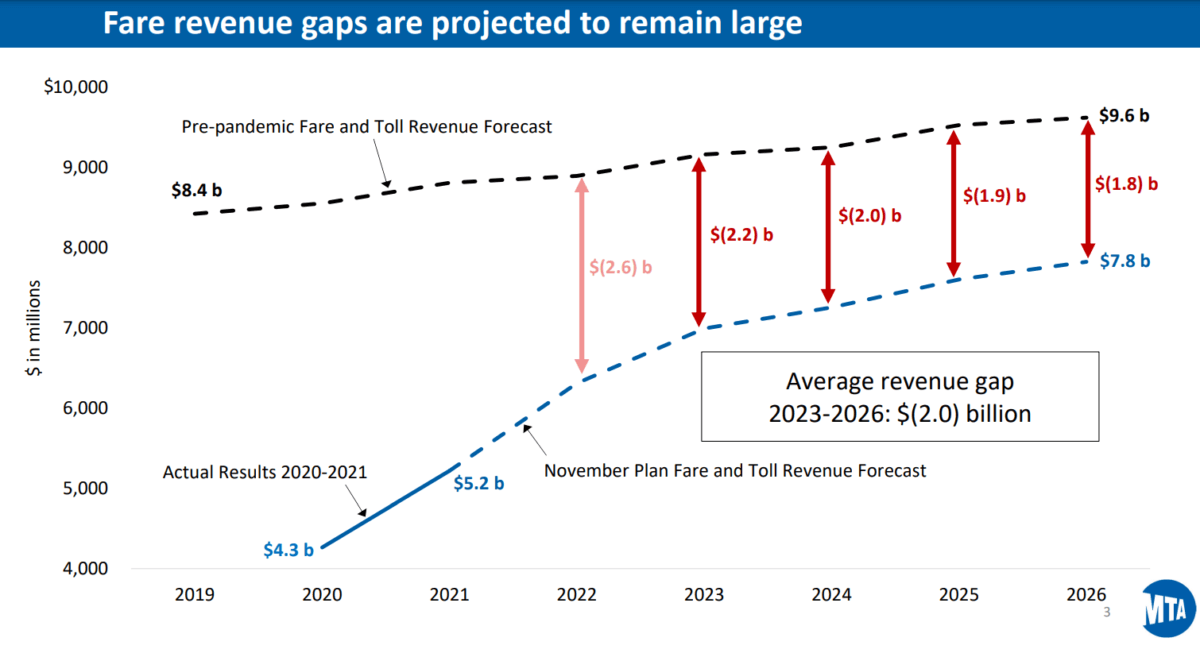
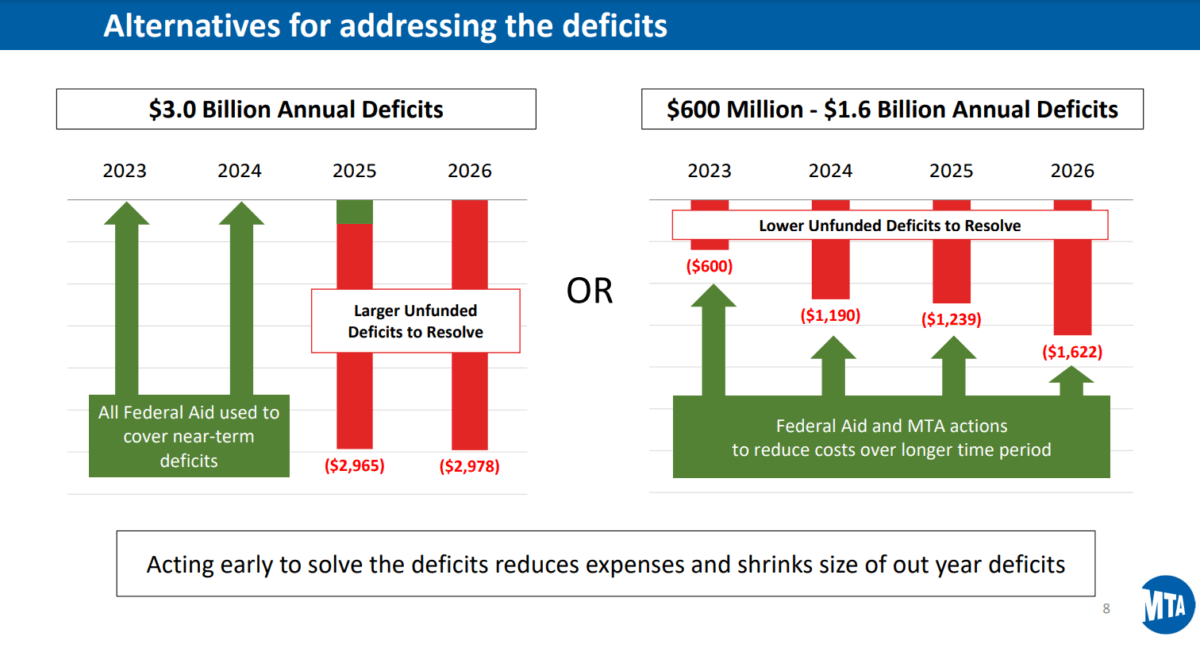
Sea of post-pandemic red ink
The MTA was battered by the COVID-19 pandemic as ridership plummeted during the initial 2020 lockdown, and has yet to return to 2019 baseline levels of ridership as working from home becomes more normalized. New York’s transit system is more reliant on farebox revenue than many other its peers across the nation, and the loss of ridership has been devastating for the agency’s finances; since 2020, the authority has relied heavily on $16 billion of federal aid to pay its bills and provide transit service to New Yorkers without upping fares.
The authority, which by law must produce a balanced budget, could in theory pay down this year’s and next year’s budget with the $5.6 billion of federal COVID aid it has left, but agency brass considers that option untenable due to the nearly $3 billion annual deficits it would be left to contend with after 2025, potentially necessitating even more painful fare hikes and spending cuts.
Instead, the remaining COVID aid would be apportioned over the next four years to allow for more manageable annual deficits, which officials hope will be covered by new revenue. Should they not materialize, the MTA will return to the drawing board in February to consider even further belt-tightening measures.
New revenue streams are anything but a given, despite a significant lobbying effort by officials like Lieber that’s even included a trip to the post-election bacchanal SOMOS in Puerto Rico, this month to press the issue with lawmakers.
“Washington, City Hall, and Albany all have a role to play in figuring out how to get the MTA through this budget crisis,” Lieber said. “We want to make clear today that that discussion needs to unfold sooner rather than later. That our recommendation is not to kick the can, to careen 100 miles-per-hour towards the fiscal cliff, but rather to come up with a plan now that makes sure that riders can count on the system being there at a high level of service at an affordable cost, and a safe system, for many years.”
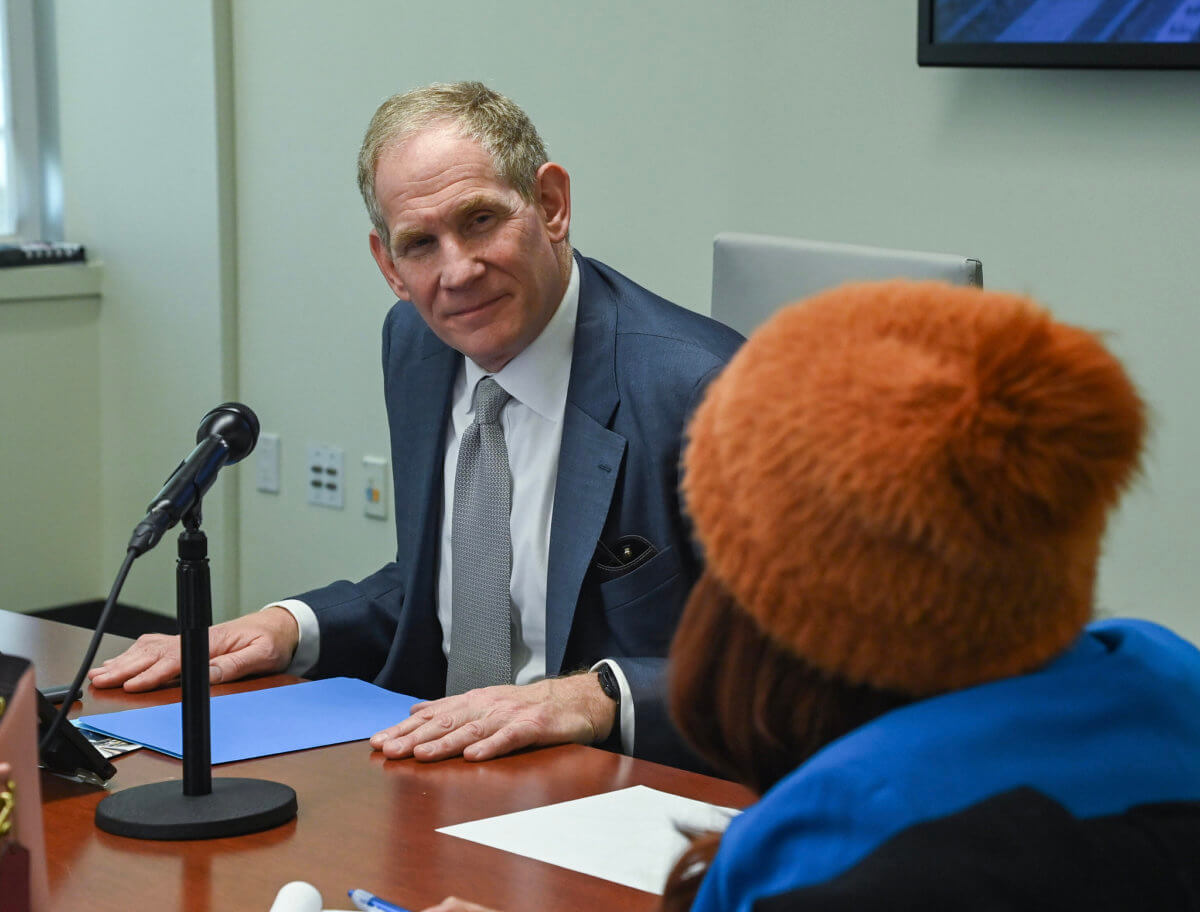
So far, no answers from Albany and DC
So far, neither the city, state, nor federal governments have been forthcoming with a plan for boosting cash to the beleaguered authority, even as pretty much everyone is loath to consider fare hikes on the region’s straphangers.
Last year, Governor Kathy Hochul announced a postponement of fare hikes after the state secured money from the federal bipartisan infrastructure bill; a spokesperson for the governor did not commit to new state funding, but said the administration plans to keep many options on the table to bolster transit.
“Governor Hochul took action last year to avoid a fare hike or service reductions, and she is committed to providing safe, quality, and reliable transit service to riders,” said Hochul spokesperson John Lindsay. “We will continue working with federal partners and state legislators on how to best support public transit.”
Speaking to the press earlier this week, the governor said she would not be “telegraphing” her budgetary intentions ahead of her State of the State address in January but that she remains in talks with the MTA and legislators.
“You know how I deal with the budget. I’m not going to be telegraphing, it’s the same as 2021. I have a lot of ideas,” Hochul said. “I’ve been working on my State of the State since the end of June, actually…So, we’re focusing on the State of the State, focusing on the budget, but I want to have the opportunity to work with the legislature in a collaborative way that we did successfully last year. So, I will talk about that with them first.”
If the stars aligned and lawmakers come through not only with the $600 million to plug the deficit, but enough money to make fare hikes completely unnecessary, the authority is “all ears,” said Lieber.
A spokesperson for US Senate Majority Leader Chuck Schumer noted that New York’s senior senator was instrumental in securing billions of dollars in COVID relief money for the MTA in the first place and that Big Apple residents could expect a similar fight for the present crisis. “$15 billion to the MTA shows that Senator Schumer will continue his regular and rigorous advocacy,” the spokesperson said.
Federal aid for mass transit may be harder to come by in the immediate future, however, as Republicans take control of the House of Representatives.
A spokesperson for Mayor Eric Adams said that continuing efforts to boost subway ridership must remain a priority.
“Boosting subway ridership is essential to our city’s recovery,” said the rep for Hizzoner. “As a frequent subway rider himself, Mayor Adams believes that riders must be the priority in any plan to address the MTA’s fiscal challenges and build a safe, reliable subway system.”
Spokespersons for State Senate Majority Leader Andrea Stewart-Cousins and Assembly Speaker Carl Heastie did not respond to requests for comment.
Stakeholders also reacted to the financial plan with pleas for help from those with the power of the purse.
“All levels of government must step up and fund the bus and subway system — or we are going to quickly slide back into another horrible era with equipment breakdowns, delayed trips, track fires, and graffiti everywhere,” said Transport Workers Union Local 100 president Tony Utano. “All the investments made up to this point will have been wasted. We’ve seen this movie before and it’s a disaster. It must be avoided at all costs.”
Riders Alliance, the straphangers’ advocacy group, called on the governor to not only prevent fare hikes in her upcoming State of the State, but invest in more frequent and reliable service.
“Governor Kathy Hochul must use her January budget to stop the MTA fare hike and save and invest in the public transit that New York is unthinkable without,” said Danny Pearlstein, the group’s policy and communications director. “Riders need our governor to stabilize transit for millions who need it every day and increase the frequency of subway and bus service to meet new needs in the pandemic’s wake.”



